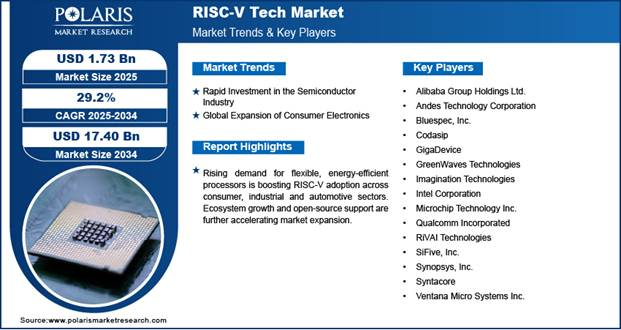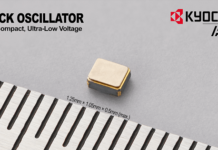
Open-standard instruction set architectures (ISAs) are becoming common in the semiconductor industry. The shift is being led by RISC-V. The open-source nature of RISC-V allows for the design of custom processors that have high flexibility. RISC-V is also modular and scalable, making it suitable for various applications. The rising focus on efficient and cost-effective computing solutions across industries has led to the rapid expansion of the RISC-V tech market.
What is RISC-V Technology?
RISC-V is an open-source architecture. It is based on the Reduced Instruction Set Computing (RISC) principle. RISC-V is available under open licenses. This takes away costly royalty or licensing fees. The modular design means developers have to implement only the instructions needed for their application. This reduces the consumption of power and lowers costs. In addition, the flexibility of RISC-V allows for tailored processor designs.
Where is RISC-V Used?
Consumer Electronics
The use of RISC-V is increasing in consumer electronics. This is because they combine customization with optimized performance. Their use in smartphones allows manufacturers to improve processor designs without unnecessary overhead. The low-power consumption is beneficial for wearables such as smartwatches and fitness trackers. Its use in home automation devices allows for real-time operations and keeps prices affordable. Faster innovation cycles are also enabled by the open-source foundation.
Automotive Systems
Another application area for RISC-V is the automotive sector. High-performance processors that can handle sensor fusion and image recognition are needed in Advanced Driver Assistance Systems (ADAS). RISC-V is highly scalable. So, it’s well-suited for these demanding applications while still supporting simpler functions. RISC-V can play a role in battery management systems and motor control of electric vehicles (EVs). Its use in EVs ensures that EVs are safe and efficient.
Industrial and IoT Devices
Industrial automation and IoT networks require processors that are cost-effective and energy-efficient. The modular design of RISC-V means developers can opt to not include unnecessary instructions. This helps develop lightweight processors that are suitable for sensors and edge devices. The customization of RISC-V can be done for handling machine vision and motion control. Use of RISC-V in IoT ensures long battery life and low latency.
Data Centers and High-Performance Computing (HPC)
Cloud computing and AI-driven analytics are on the rise. This has made data centers and HPC environments to look for alternatives that go beyond traditional processors. The use of RISC-V is being explored as a platform that can handle computationally intensive tasks. Its open-source model means chip designers can experiment with specialized instructions to improve throughout and efficiency. Over time, this could help in reducing dependency on existing proprietary chip architectures and lowering operational costs.
What Are Key RISC-V Tech Market Metrics?
- Polaris Market Research has done an in-depth analysis of the RISC-V tech market.
- The analysis reveals that the market stood at USD 1.35 billion in 2024.
- The report notes that the market is projected to grow at a CAGR of 29.2% between 2025 and 2034.
What’s Driving Market Forward?
Open-Source Architecture Advantage
One of the key market drivers is the open-source architecture of RISC-V technology. RISC-V can be modified and used without licensing fees. This flexibility makes it easier for startups and smaller semiconductor firms to access the technology. They can innovate without high upfront costs. The open ecosystem also allows for collaboration between academia and industry.
Cost Efficiency and Customization
Licensing isn’t the only area where RISC-V offers cost benefits. Companies are able to design processors that are highly customized for specific workloads. This helps in optimizing performance and power efficiency. For example, it’s possible to create lightweight designs in embedded systems and IoT applications. RISC-V balances efficiency and specialization, making it an attractive alternative to traditional processors.
Ecosystem Development and Industry Collaboration
The ecosystem for RISC-V is maturing. The growing network of hardware vendors and software developers is supporting it. Collaborations between chip manufacturers and universities ensure that compilers and development tools are optimized for RISC-V. The ecosystem development reduces technical barriers and boosts the commercial adoption of the technology.
Conclusion
Open-source architecture in semiconductor design has several benefits to offer. And industries are increasingly recognizing it. The high flexibility and cost efficiency of RISC-V make it possible for developers to create tailored solutions. This adaptability is driving innovation. It is also lowering barriers to entry for startups and research institutions. As global investments rise and collaborations expand, the RISC-V tech market is well-positioned to challenge established proprietary ISAs. Companies that adopt RISC-V early have the chance to gain a competitive advantage.
















